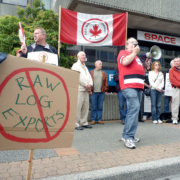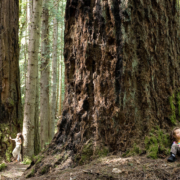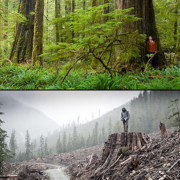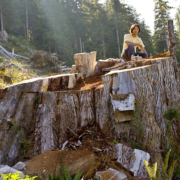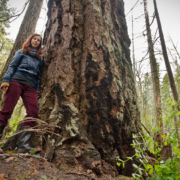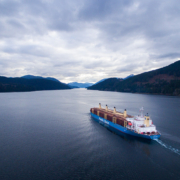Horgan, Hicks, and Cash Join Ancient Forest Alliance on Tour of Avatar Grove and to Canada’s Biggest Trees and Stumps
Port Renfrew, BC- Malahat-Juan de Fuca MLA John Horgan, CRD Director for the Juan de Fuca Electoral Area Mike Hicks, and Port Renfrew Chamber of Commerce member Jon Cash joined the Ancient Forest Alliance’s TJ Watt and Ken Wu for a visit to the threatened Avatar Grove, San Juan Spruce (Canada’s largest spruce tree), and a nearby clearcut with giant stumps this past Tuesday, September 28. Both politicians have expressed an interest in the protection of these world-class old-growth stands.
“BC’s endangered ancient forests are incredibly valuable for many reasons,” states TJ Watt, Ancient Forest Alliance co-founder. “Not only are they among the most at-risk ecosystems in the world but they’re probably some of the most beautiful places on the planet. People come from around the globe to visit these forests and they spend money here in the process. Old growth tourism has enormous potential here to combine long-term, stable jobs with sustainability. Lots of people have realized this: that’s why local businesses and politicians have shown such strong support for the protection of these forests.”
To date, local representatives from every level of government have spoken up favorably for protecting old growth stands on southern Vancouver Island. Horgan’s, Hick’s, and Cash’s tour comes hot on the heels of Esquimalt-Juan de Fuca MP Keith Martin’s proposal to extend Pacific Rim National Park Reserve’s boundaries to protect adjacent endangered forests, including the grandest stands of old-growth trees in Canada in the Upper Walbran Valley, Avatar Grove, and forests in and around the Red Creek Fir and San Juan Spruce.
In addition, local businesses took a similar stance when the Sooke Regional Tourism Association and the Port Renfrew Chamber of Commerce submitted a written request earlier this year asking the BC government to spare the Avatar Grove from logging. Yet the province refuses to heed the rally cry from the public and businesses alike.
The Capital Regional District’s parks department also undertook a public input process in the spring to determine candidate areas for new regional parks in which there was a large amount of public support for the protection of the Avatar Grove and forests around the Red Creek Fir and San Juan Spruce. The CRD board of directors earlier this year voted to increase the annual parkland acquisition fund from $10 to $20 per average household by 2014, raising tens of millions of dollars for the purchase of private lands. Crown lands, such as in the Avatar Grove, would require a transfer of management authority from the province to the regional district should the area be made a regional park.
“Whether by supporting their protection in new CRD regional parks, provincial protected areas, or in an expanded Pacific Rim National Park Reserve, local politicians like Hicks, Horgan, and Martin are vital to ensure that a solution is implemented that protects the last remnants of ancient forests here while a sustainable second-growth forest industry is developed,” states Ancient Forest Alliance campaign director Ken Wu.
“Tourism is a multi-billion dollar industry in BC and the province’s largest employer. Millions of tourists come to see BC’s giant trees and ancient forests, and millions more will come if they are protected and promoted while we shift the logging industry into sustainably logging second-growth stands instead,” adds Watt. “It’s 2010 and the logging of centuries-old giant trees with trunks as wide as a living room is continuing daily in this province. For now, we still have the golden opportunity to protect some of the most charismatic and threatened ecosystems on Earth.”
Old-growth forests are extremely important for sustaining species at risk, tourism, clean water, and First Nations traditional cultures.
About 75% of the original productive old-growth forests have been logged on Vancouver Island, including 90% of the valley bottoms where the largest trees grow, according to satellite photos. Only about 6% of the Island’s original, productive old-growth forests are protected in parks.
With so little of our ancient forests remaining, the Ancient Forest Alliance is calling on the BC government to protect our endangered ancient forests, ensure sustainable second-growth forestry, ban raw log exports, and assist in the development of value-added, second-growth mills and facilities.

